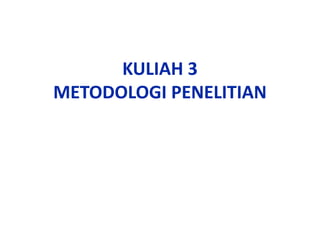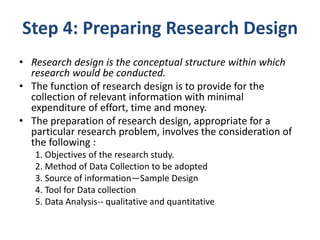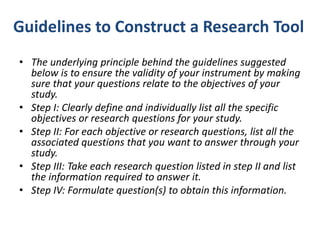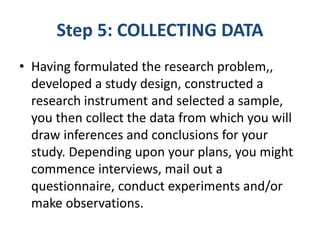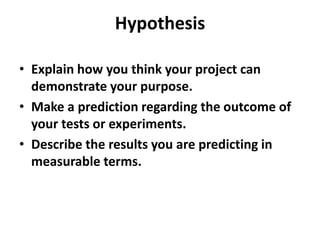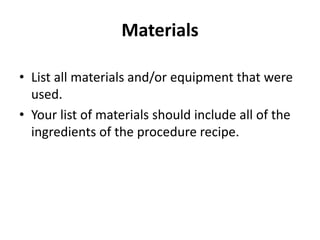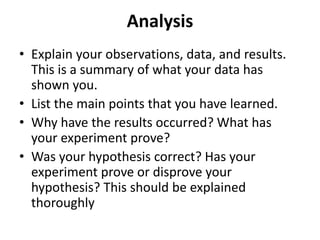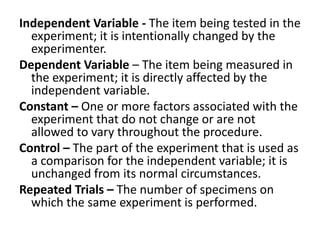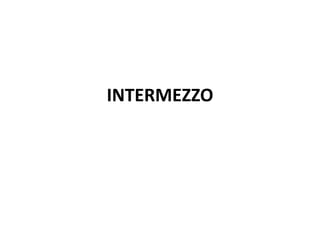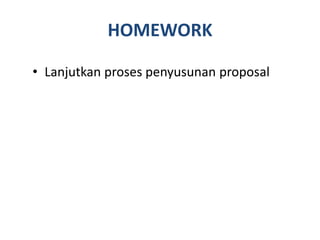This document outlines the steps of the scientific research method and experimental design process. It discusses:
1. Defining the research question and formulating a hypothesis.
2. Designing an experiment to test the hypothesis, including identifying variables, controls, and repeated trials.
3. Collecting and analyzing data from experiments to interpret results and determine if they prove or disprove the original hypothesis.
4. Publishing findings so other scientists can review and potentially replicate the research.
The key steps are formulating a research problem and hypothesis, designing a controlled experiment to test the hypothesis through measurable data collection and analysis, and communicating results. The overall goal is to advance scientific understanding through this systematic process.
